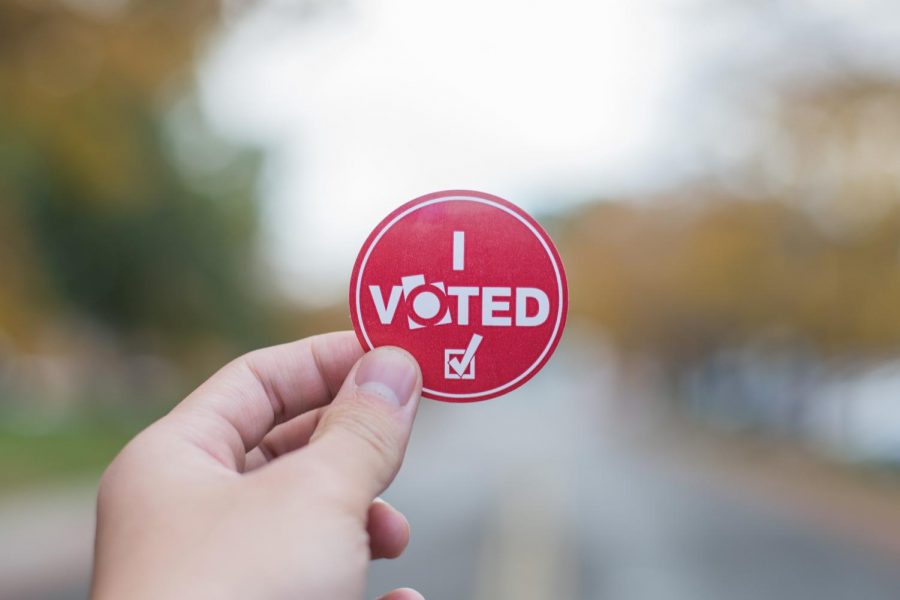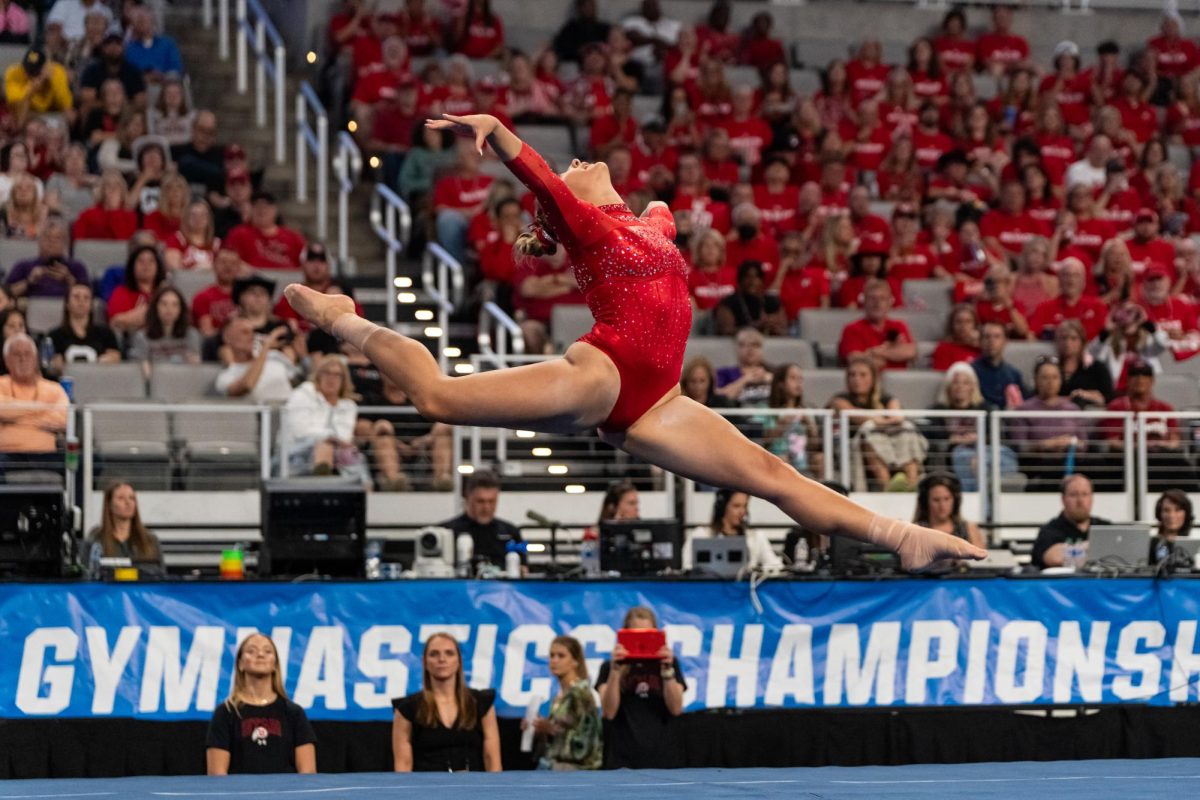Brown: The Need for Ranked Choice Voting
September 22, 2021
American politics face a problem: politicians can win elections with less than a majority vote. If a candidate can’t scrape together approval from more than half of eligible voters, we shouldn’t say they were democratically elected.
For example, in the 2020 Wisconsin presidential elections, neither current president Joe Biden nor former president Donald Trump reached 50% of the vote. Still, Biden took home all 10 electors. By implementing ranked-choice voting (RCV), voters in both primary and general elections would have a greater chance of getting their voices heard.
Ranked Choice in Action
Although many states would undergo drastic change to turn their election systems into ranked-choice, it’s been done before. The recent New York City Democratic mayoral race perfectly demonstrates what RCV can look like. Candidate Eric Adams started off strong, but only gathered about 30% of the first-choice votes.
In systems with plurality winners, that percentage would have easily been enough to win it. Instead, using RCV and voters’ secondary preferences, New York slowly whittled the race down to two candidates. While Adams still won the race, he only beat his runner-up by 9,000 votes. Still, he was given legitimacy by the majority of people, and we can safely say that he was democratically elected.
Australia’s parliamentary system has also used this approach for years. Through the need for majority approval, candidates have been forced to campaign towards all voters, hoping to move their name up on the rankings of individual voters. Extreme positions often don’t rank high on most ballots, leading centrist candidates to a win in many cases.
In an era in which presidential politics have become so polarized, Americans could benefit from a candidate who must earn approval from both sides of the political spectrum.
Ranked Choice and Legitimacy
There is perhaps no stronger case for RCV than in the presidential nomination races. Often consisting of three or more viable candidates, some primaries award delegates to a candidate with nowhere near a majority of the vote share. For instance, Biden won North Carolina in 2020 with a mere 43% of the vote. While at least the delegate share was split among top vote-getters, plurality winners earn a number of delegates that far outweighs their vote total.
In 39 states, the system functions as “winner-take-all,” where the candidate who gets the most votes wins, despite not winning by majority. In the 2016 Florida Republican Primary, Trump won all 99 delegates with under 50% of the votes. While that’s not necessarily bad, if a majority of voters don’t even support the winner in a given election, there’s little basis to elect them.
RCV will not serve to swing the election against the plurality winner, but rather to give full legitimacy to the winner. Trump’s large lead would likely have sustained with RCV, and he would have earned delegates by will of the majority.
But sometimes RCV might leave the original plurality winner in the dust. This likely means that they were far too polarizing and didn’t appeal to voters as much as more moderate candidates. This outcome doesn’t happen often and hasn’t occurred in American cities and states that utilize this system. However, it remains a strong possibility and would reflect the true will of the people.
Helping Third Party Candidates
Those identifying as politically moderate typically feel frustrated with the existence of a two-party system. From the start, the founders knew this frustration would take place. 1968’s presidential election saw the last third-party candidate to win a state, and the last to even win 5% of the popular vote was in 1996.
This doesn’t typically happen because voters think binarily, but because they choose the candidate that most closely aligns with their views — even if they’re pretty far off.
For example, I largely vote Republican, though I hold much more libertarian ideas. While some smaller candidates closer represent the views of some voters, voters like me refrain from backing them because, put simply, they won’t win.
Many political circles refer to voting for a third party as “throwing your vote away.” Critics of third-party voting denounce the “selfishness” of voting based on self-interest and personal beliefs. If you align with a third party, your options consist of either throwing away your vote or backing one of the big dogs. There doesn’t seem to be a way around it.
But a ranked-choice system paves that way.
By allowing voters to put down multiple candidates, they can do both. It opens up the freedom to support the third-party, while being able to back the preferred big dog if (and likely when) the third-party loses. RCV would take the burden off of third-party voters and present a better opportunity to break up the two-party system.
The Future
Obviously, implementing a large-scale ranked-choice voting system is no easy task — especially given the power states have over elections. However, it wouldn’t require a full system overhaul. The electoral college representatives could still choose the president, delegates could still produce nominees and so on.
The way they choose those delegates, however, would change. In doing so, a rigid two-party system with messy winner-take-all elections and plurality winners could be erased. Instead, our elections would reflect the true will of the people, and America would become better because of it.













Brian Stephenson • Sep 27, 2021 at 1:02 pm
As mentioned in the other 2 comments, Ranked Choice voting is* better than the current system, and Approval voting, and STAR voting exist, and should be considered. How do cardinal voting methods (Approval, Score, STAR voting) compare to RCV ?
+ While RCV only ever takes into account a voter’s top active choice, cardinal methods take into account a voters score/preference on all candidates. This leads to the chosen candidate being more representative of the populace.
+ Because the scores on a cardinal ballots are independent, vote splitting and spoilers are non-issues. Despite claims from RCV proponents, the same cannot be said of RCV.
For these reasons and more complex ones, cardinal methods are better than RCV. Between Approval and STAR voting, which is better? STAR voting collects more information from voters and uses it effectively. Approval is simpler and in some cases, compatible with existing voting machines, making it especially apt for adoption.
Adam Masiarek • Sep 23, 2021 at 6:41 pm
Did you consider STAR voting or Approval voting?
https://www.starvoting.us/ and https://www.equal.vote/
– How it works: https://www.youtube.com/watch?v=3-mOeUXAkV0
John Whitmer • Sep 23, 2021 at 12:59 pm
This is an excellent piece, making quite clear why RCV is preferable to winner-take-all voting. The advantages of RCV are not so much changing election outcomes – considerable evidence exists that in the large majority of elections the same winner would’ve emerged under both RCV and winner-take-all.
The real advantages of RCV are the incentives across many aspects of elections: encouraging more diverse folks to run feeing they have a shot, possibly saving expenses of unneeded primaries, allowing voters to vote their conscience, encouraging more voters to take an interest in elections because they feel they have more influence, encouraging more civil campaigning, etc. These advantages are powerful irrespective of how they might alter an election outcome.
Elections where vote-splitting might tip a close election and possibly change an outcome are not especially common. But if this is a possibility RCV can help avoid the problem.